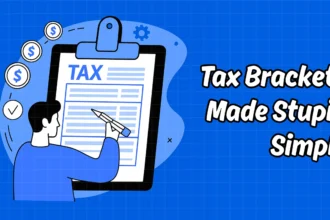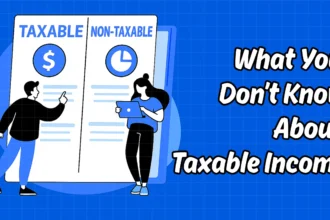Key Takeaways
- Adjusted Gross Income (AGI) is your total income minus specific IRS-approved adjustments.
- It determines eligibility for tax credits and deductions.
- Lower AGI usually means a smaller tax bill.
- Common adjustments include student loan interest, HSA deposits, and retirement contributions.
- Your AGI appears on Form 1040, line 11, and influences much of your tax return.
- Knowing your AGI helps you plan smarter financial moves year-round.
Introduction
There’s a line on your tax return called Adjusted Gross Income—AGI for short—and it’s a lot more important than most people realize. This number affects much more than just the tax you pay: it influences what deductions or credits you qualify for. And even whether you can claim benefits like the Child Tax Credit depends on it. If you want to understand your taxes, start with AGI. This article breaks down what it is, how to calculate it, and why it matters more than you might think.
What Is Adjusted Gross Income (AGI)?
Adjusted Gross Income is the middle ground between your total earnings and the income that actually gets taxed. Think of it like this:
- Start with gross income—all the money you made during the year (jobs, side gigs, interest, dividends).
- Then, subtract specific adjustments the IRS allows—like educator expenses, student loan interest, HSA contributions, deductible IRA contributions, and half of your self-employment tax.
That leftover amount is your AGI. It’s not the final number—because you’ll still subtract either the standard or itemized deductions to get your taxable income—but it’s the all-important foundation.
On Form 1040, you’ll find AGI listed on line 11. It’s the first number that really matters: it decides what deductions and credits you can claim and shapes your overall tax liability.
Understanding AGI means understanding your filing ability—it’s foundational, easy to calculate, and a smart control point for managing your tax outcome.
How the IRS Uses AGI in Your Tax Return
Your AGI is more than just a number—it’s your ticket to tax-related perks (or penalties). The IRS uses it as the gateway to determine eligibility for deductions like the Saver’s Credit, IRA contribution deductions, and the Premium Tax Credit. If your AGI stays below certain thresholds, you can take full advantage of those benefits. Go over the limit? The credit phases out—or disappears—no matter how much you deserve it.
AGI also determines how much of your medical expenses you can deduct (typically those exceeding 7.5% of AGI). Same with charitable giving or student loan interest deductions—they shrink or vanish as your AGI rises.
Even some state tax calculations rely on your federal AGI. That number is so powerful it impacts both your federal and state tax situations.
Bottom line: AGI shapes nearly every corner of your tax return—why understanding and managing it can lead to huge savings come tax time.
What Counts Toward AGI (and What Doesn’t)
Let’s clarify what gets included in your AGI, and what doesn’t:
Counts as income:
- Wages, salaries, bonuses, and tips, shown on Form W‑2
- Self-employment or gig income, reported via Schedule 1 and 1099‑NEC
- Interest and dividends from bank and investment accounts
- Rental income, royalties, and capital gains
- Some retirement benefits like pensions or taxable Social Security
Doesn’t count as income:
- Gifts and inheritances
- Life insurance proceeds from a policy
- Workers’ compensation and most disability payments
- Qualified scholarships used for tuition, fees, and materials
Then, to reach AGI, you subtract above-the-line adjustments—the IRS terms for income cuts before AGI calculation. Common ones include:
- Student loan interest
- HSA contributions
- Traditional IRA contributions
- One-half of self-employment tax
- Educator expenses
- Self-employed health insurance premiums and early withdrawal penalties
For example: $60k wages + $2k interest – $3k IRA – $1k student loan interest = $58k AGI.
That figure influences what credits or deductions you can take later, meaning each tax move you make has cascading effects on your return.
Why a Lower AGI Can Save You Money
A smaller AGI not only reduces your tax bill directly, but also unlocks doors to savings. That’s because many tax credits and deductions phase out once your AGI hits certain thresholds. For instance, to qualify for the Saver’s Credit in 2025, your modified AGI must be under $39,500 if filing single—or $79,000 if filing jointly.
Contributing to a traditional IRA or a Health Savings Account before filing can knock your AGI down, perhaps pushing you under eligibility cutoffs for credits like the Child Tax Credit or Earned Income Tax Credit (EITC). Even deducting student loan interest or educator expenses helps.
Here’s a quick example: Anna’s AGI is $41,000 without adjustment. She’s ineligible for the Saver’s Credit. But she contributes $2,000 to an IRA, bringing her AGI to $39,000. That moves her into the eligible range—earning her a credit she wouldn’t otherwise qualify for. It shows how even a small adjustment can unlock big savings.
AGI vs. Taxable Income — What’s the Difference?
AGI and taxable income aren’t the same thing—and it’s important to understand why.
AGI is your gross income minus above-the-line adjustments: IRA contributions, student loan interest, HSA deposits, and so on. It’s reported on Line 11 of Form 1040.
Taxable income comes next. From AGI, you subtract either the standard deduction or your itemized deductions—whichever is higher—to find the number the IRS actually taxes.
Say your AGI is $60,000. You choose the standard deduction of $15,000 (single filer).
That leaves $45,000 as taxable income. The IRS then applies tax rates to each income portion (10%, 12%, 22%, and so on).
Think of it like peeling layers: gross income → AGI → taxable income. Each layer reduces what’s taxed—and smart moves at the AGI stage can prevent higher taxable income later.
Where to Find Your AGI on Your Tax Forms
When you’re ready to file, knowing exactly where to find Adjusted Gross Income (AGI) on your tax forms can save you headaches. On the 2025 Form 1040, AGI is listed on Line 11 (irs.gov). That’s your official IRS AGI number, which many tax and financial tools use for verification during e-filing.
If you plan to file online, the platform will usually ask you to enter last year’s AGI to confirm your identity. It also feeds into your state tax return, since many states base their calculations on your federal AGI.
Your AGI is also easy to find on printed or PDF copies of past 1040s—just look at Line 11. Keeping a copy on hand can save time next year, especially if your tax situation or income changes.
Bottom Line – Don’t Ignore Your AGI
Your AGI is more than just a tax return number—it’s a powerful tool that shapes everything from your deductions to your credits. Lowering your AGI with smart moves like contributing to an IRA or HSA can lead to real savings and open eligibility doors.
Because your AGI shows up on Line 11 of Form 1040 and is used for state filings and e-file verification, it’s essential to understand and track it. When you see AGI not as a static figure but as a control lever, you gain a clearer, more strategic approach to taxes. In 2025, that knowledge doesn’t just boost your refund—it gives you control.








